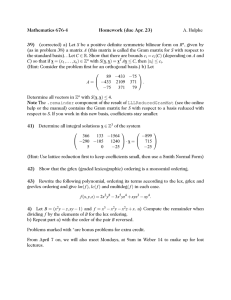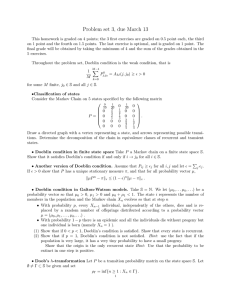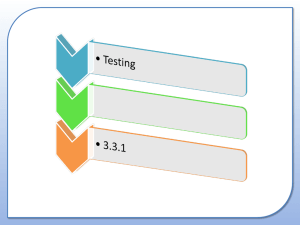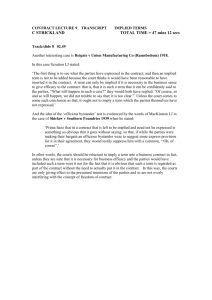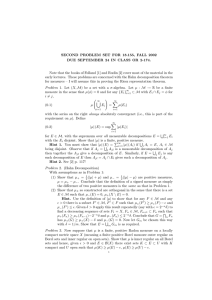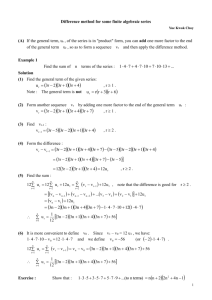Click here to enter text.
advertisement
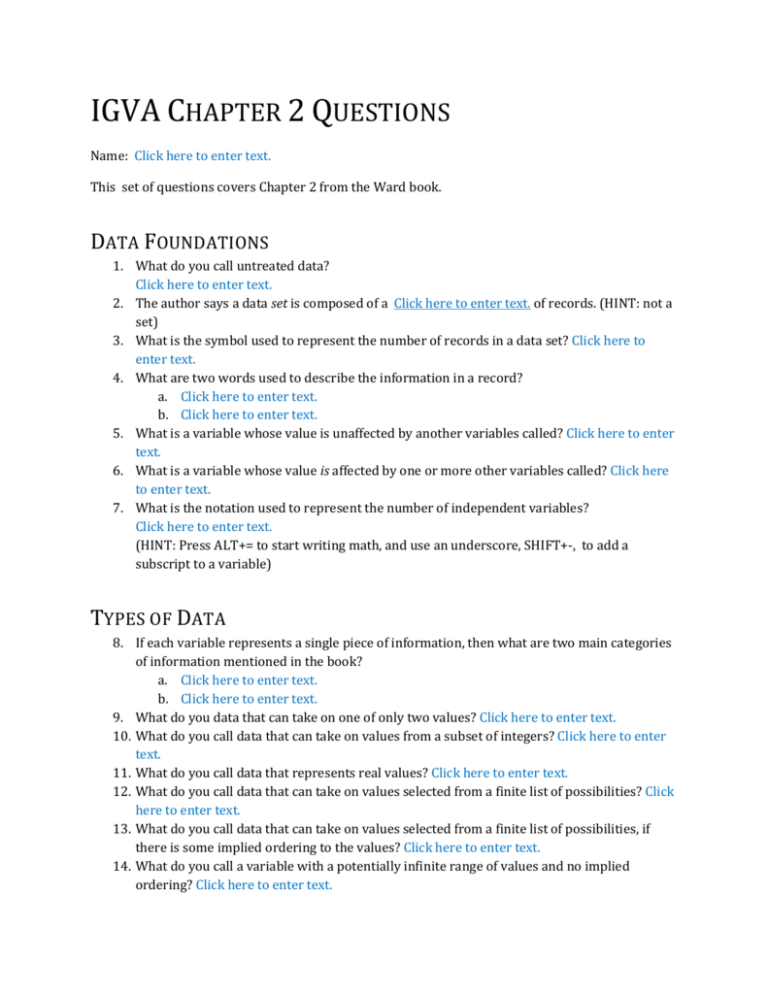
IGVA CHAPTER 2 QUESTIONS Name: Click here to enter text. This set of questions covers Chapter 2 from the Ward book. DATA FOUNDATIONS 1. What do you call untreated data? Click here to enter text. 2. The author says a data set is composed of a Click here to enter text. of records. (HINT: not a set) 3. What is the symbol used to represent the number of records in a data set? Click here to enter text. 4. What are two words used to describe the information in a record? a. Click here to enter text. b. Click here to enter text. 5. What is a variable whose value is unaffected by another variables called? Click here to enter text. 6. What is a variable whose value is affected by one or more other variables called? Click here to enter text. 7. What is the notation used to represent the number of independent variables? Click here to enter text. (HINT: Press ALT+= to start writing math, and use an underscore, SHIFT+-, to add a subscript to a variable) TYPES OF DATA 8. If each variable represents a single piece of information, then what are two main categories of information mentioned in the book? a. Click here to enter text. b. Click here to enter text. 9. What do you data that can take on one of only two values? Click here to enter text. 10. What do you call data that can take on values from a subset of integers? Click here to enter text. 11. What do you call data that represents real values? Click here to enter text. 12. What do you call data that can take on values selected from a finite list of possibilities? Click here to enter text. 13. What do you call data that can take on values selected from a finite list of possibilities, if there is some implied ordering to the values? Click here to enter text. 14. What do you call a variable with a potentially infinite range of values and no implied ordering? Click here to enter text. 15. Which three attributes define a variables “measure”? a. Click here to enter text. b. Click here to enter text. c. Click here to enter text. STRUCTURE WITHIN AND BETWEEN RECORDS 16. What do we call the means of representing data? Click here to enter text. 17. What do we call types of interrelationship within and between records? Click here to enter text. 18. What do we call an individual number in a data record? Click here to enter text. 19. What do we call a composite data item made of two or more scalars? Click here to enter text. 20. What do we call a more general structure that is generally represented by a matrix or an array? Click here to enter text. 21. Briefly describe the difference between explicit and implicit geometric structure. Click here to enter text. 22. List three types of coordinate systems used for grid-structured data a. Click here to enter text. b. Click here to enter text. c. Click here to enter text. 23. What do we call the structure within data sets that captures the way data records are connected? Click here to enter text. 24. For which two processes is connectivity information essential? a. Click here to enter text. b. Click here to enter text. 25. List seven examples of structured data: a. Click here to enter text. b. Click here to enter text. c. Click here to enter text. d. Click here to enter text. e. Click here to enter text. f. Click here to enter text. g. Click here to enter text. 26. What can indicate records with erroneous data fields? Click here to enter text. 27. What can segment data into groups exhibiting strong similarities? Click here to enter text. 28. What can help users identify redundant fields or highlight connections between dimensions that might not have been apparent? Click here to enter text. 29. What is the most common statistical plot of data? Click here to enter text. 30. List five ways of dealing with missing or erroneous data? a. Click here to enter text. b. Click here to enter text. c. Click here to enter text. 31. 32. 33. 34. 35. 36. 37. d. Click here to enter text. e. Click here to enter text. What is the process of transforming data so that the results satisfy some statistical property? Click here to enter text. What do you call a segmentation of data such that the regions are not semantically homogenous? Click here to enter text. What do you call a segmentation of data that consists of many tiny regions? Click here to enter text. List the three methods of interpolation: a. Click here to enter text. b. Click here to enter text. c. Click here to enter text. List three computational methods for data reduction a. Click here to enter text. b. Click here to enter text. c. Click here to enter text. What is a potential problem with the approach of just assigning integer values to nominal variables in order to visualize them? Click here to enter text. List four image processing techniques to convert raster data into vector data a. Click here to enter text. b. Click here to enter text. c. Click here to enter text.

